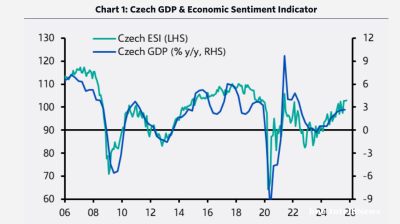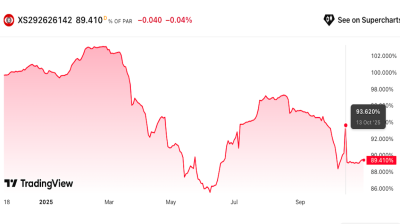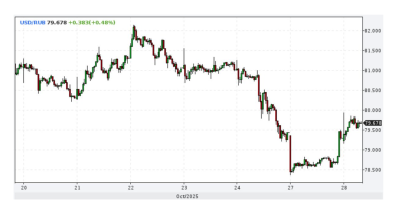The current account surplus of Russia’s balance of payments hit a new all-time high of $166bn in the first seven months of this year – triple the level of the same period a year ago that was already a record, according to the Central Bank of Russia’s (CBR's) preliminary estimate released on August 9. (chart)
The current account dynamics was determined by a widening of the surplus in the balance on goods and services as a result of “significant growth in the value of exports of goods and a decline in the value of imports,” CBR said in a press release.
The total deficit of other components of the current account remained at the level of the previous year, the regulator added, and the financial account surplus of the balance of payments was formed due to both a decrease in liabilities to non-residents and growth in foreign financial assets.
Russia has been earning outsized profits thanks to a surge in the price of oil and gas. While gas revenues have fallen off more recently after Gazprom reduced flows of gas to Europe by 60% in June, oil revenues continue to be strong after Russia successfully switched deliveries from Europe to China and India.
|
Key Aggregates $bn |
January-July 2021 |
|
|
January-July 2022 |
||
|
Current account |
166.6 |
50.2 |
|
Balance on goods and services |
192.4 |
75.7 |
|
Balance on primary and secondary income |
-25.8 |
-25.6
|
|
source: CBR |
In January, 54.5% of Russian oil exports (and thus 80% of the country’s oil and gas revenues) went to the European Union. By June, according to International Energy Agency figures, Russian oil exports to Europe were down a third amid Western sanctions and the announcement of a phased oil embargo.
At the height of the uncertainty in March, it looked like Russia’s “pivot to the East” might not work. Major Chinese companies refused to take Russian oil and India made to buy from the Middle East if sanctions wiped out Russian deliveries. But even by April it was clear self-interest had won out: tempted by discounts of up to 30%, China and India were happy to increase orders of Russian oil. According to Norwegian industry consultants Rystad Energy, sales of Russian crude oil to Asia almost completely compensate for European losses.
Surprisingly, though, China’s role in this turnaround is minimal. A Bloomberg chart shows that almost all the growth in Russia’s maritime oil exports to Asia in 2022 (up 43% from late January to late June) is down to India. In January, Russian supplies to India were close to zero (30,000 barrels a day), but by June they were up to 740,000 barrels a day. The same chart shows that deliveries to China actually fell. In January, Russia sold China 820,000 barrels a day. In June it was 740,000.

At several times during the war Russian deliveries to China were greater (for example, in May, they reached an average of 1.2mn barrels a day). And these are only maritime deliveries; Russia sells roughly the same amount to China (880,000 barrels per day in June) via three pipelines: one Kazakh and two Russian. These have operated at full capacity all summer.
Even so, Russia’s oil trade with China is barely increasing. According to Chinese customs statistics, in the first half of 2022, Russian crude oil exports to China were up just 4%, The Bell reports.
Data

Russia’s manufacturing PMI falls to its lowest level since May 2022 in October
Russia’s manufacturing sector saw a deeper contraction in October, with output, new orders, and business confidence all weakening, according to the latest Purchasing Managers’ Index (PMI) data from S&P Global, published on November 1.

Czech growth accelerates as domestic demand-side pressure builds
The Czech economy delivered an unexpected acceleration in the third quarter, marking a clear shift from its earlier position as a regional underperformer to one of Central and Eastern Europe’s fastest-growing economies.

Eurobonds of Istanbul-listed Zorlu units offer attractive yields amid rating downgrades and no default expectation
Debut paper currently offering 14-15% yield.

Ruble strengthens as sanctioned oil companies repatriate cash
The Russian ruble strengthened after the Trump administration imposed oil sanctions on Russia’s leading oil companies, extending a rally that began after the Biden administration imposed oil sanctions on Russia in January.



